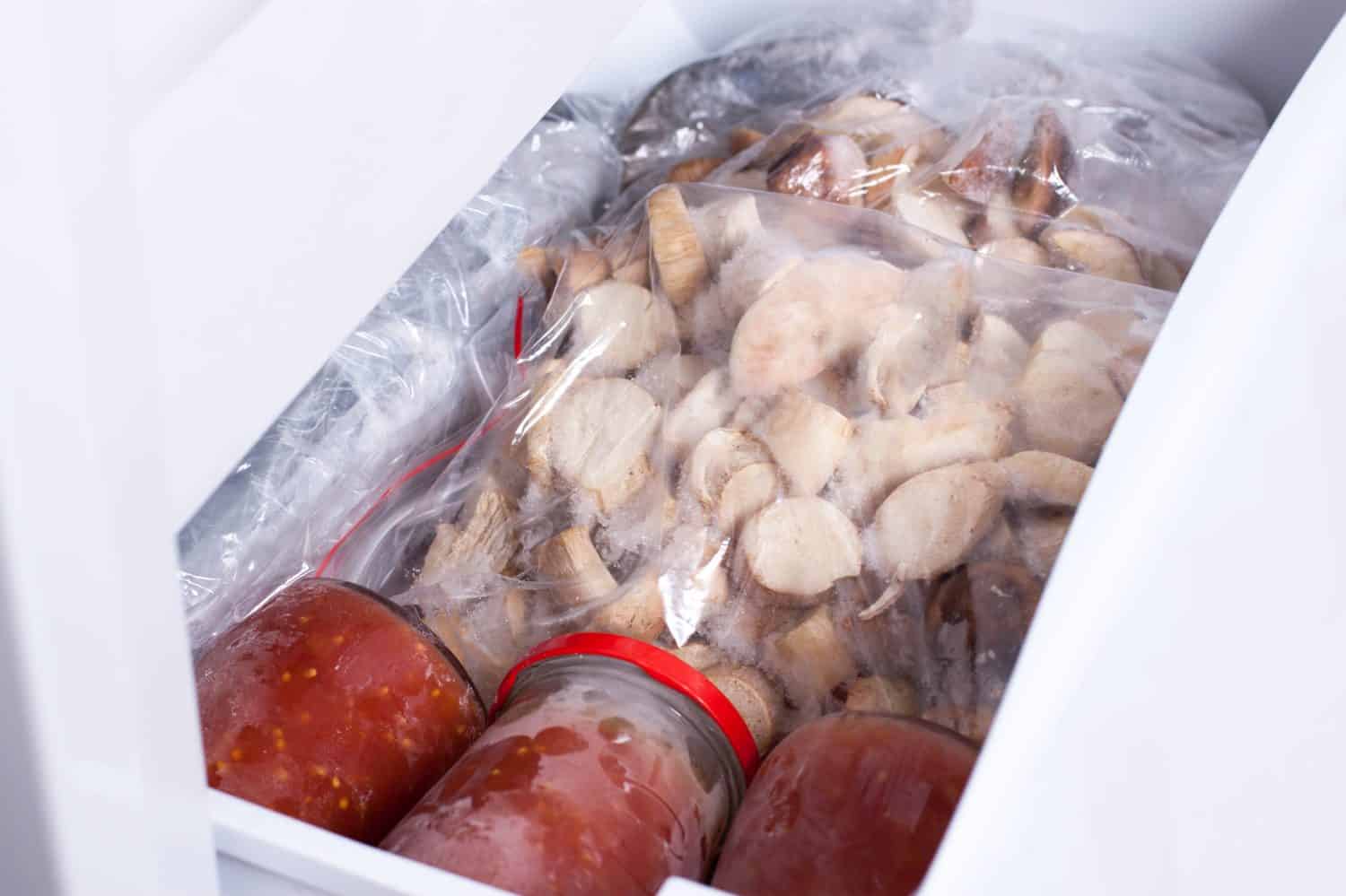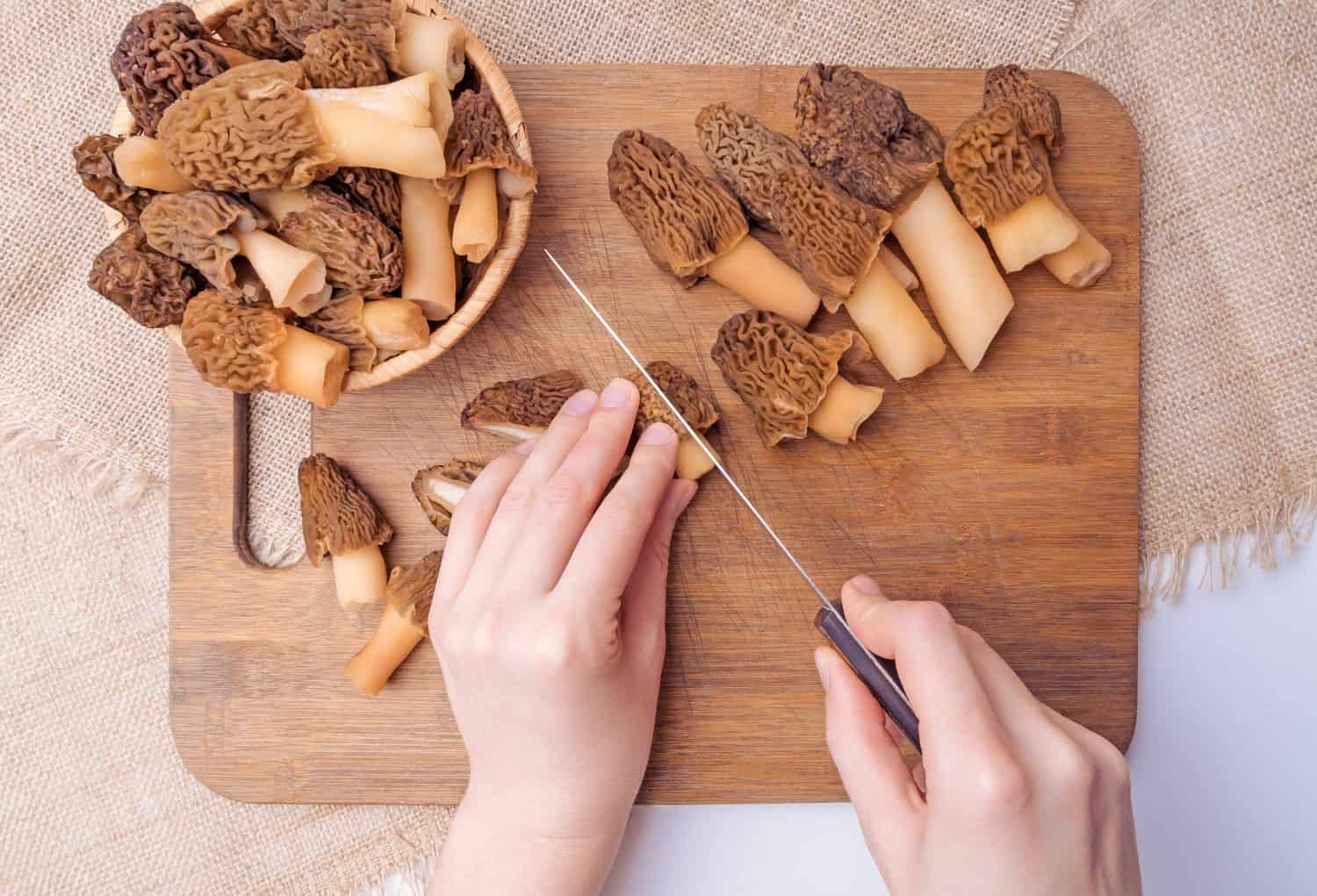If you’ve found a bounty of wild edible mushrooms, you may be wondering the best way to preserve your delicious find. Drying and pickling are common options for long-term storage of mushrooms, but you may be wondering if you can freeze them.
In this guide, we’ll discuss the best met
Read on to learn more.
So, Can You Freeze Mushrooms?
In short- yes, you can definitely freeze your wild mushroom harvest. It’s important to note, however, that you will sacrifice somewhat on taste and texture through the freezing process. As such, we recommend cooking and consuming as much of your harvest fresh as you can before freezing the excess. Additionally. it’s also crucial to know that most commonly, foraged wild mushrooms do not freeze well in a raw state. Once thawed, these raw mushrooms become soggy, limp, and no longer cook well. They also tend to lose their color vibrancy. This is due to the high water content in most mushrooms and how that water, once frozen and then thawed, alters the taste, texture, and color of the mushrooms. Lion’s mane (Hericium erinaceus) and morels (Morchella spp.) are examples of typically delicious wild mushrooms that are ruined by freezing raw.

In short- yes, you can freeze mushrooms, but it’s best to cook them first.
©Ahanov Michael/Shutterstock.com
Can You Freeze Mushrooms: Best Prep and Cooking Methods
If you’d like to preserve your wild mushrooms by freezing them, it’s best to at partially cook them beforehand. This will help maintain the integrity of their color, taste, and texture. There are a couple of methods you can use to prepare and cook your mushrooms before freezing.
Preparation
Before freezing, it’s important to clean your harvest. You can use a dry or damp soft-bristled brush to clean off dirt and remove insects. Avoid soaking your mushrooms, as this can cause sogginess. If you do rinse them under running water, make sure to only rinse for a few seconds and thoroughly pat them dry before cooking. Cleaning under flowing water works best for sturdier mushrooms like chicken of the woods but can quickly cause sogginess in more delicate mushrooms like yellowfoot mushrooms (Craterellus tubaeformis).
If applicable, remove any extra fibrous or woody parts of the mushrooms that you won’t be using later. You can keep small mushrooms, like young morels, whole or halved, but you should slice up larger specimens, such as mature lion’s mane and common oyster mushrooms (Pleurotus ostreatus).

If applicable, slice your wild mushrooms before freezing.
©Sergey Hramov/Shutterstock.com
Cooking Before Freezing
There are three main methods of cooking mushrooms before freezing: steaming, blanching, and sauteing. For all of these methods, you don’t want to cook the mushrooms thoroughly. Rather, you’ll want to partially cook them just enough to remove some of the moisture content and help retain the integrity of the mushrooms during the freezing and thawing process. Once you’re ready to use your frozen mushrooms, you’ll finish cooking them. In many cases, it’s best to finish the cooking process by sauteing the mushrooms in butter, garlic, and seasonings.
Steaming
To steam your wild mushrooms, simply place them in a steaming tray or basket over boiling water for 2-3 minutes. This process will draw out some of the internal moisture of the mushrooms while keeping them firm. Next, allow the mushrooms to cool thoroughly.
Blanching
To blanch your mushrooms before freezing, you’ll want to add them to a pot of salted boiling water for no more than two minutes. Then, dunk them in ice-cold water for a few seconds to halt the cooking process. Thoroughly pat dry the mushrooms before freezing.
Sauteing
Finally, you can also sauté your mushrooms. Typically, you’d want to dry sauté for about 5 minutes to allow the mushrooms to release their moisture, and then add butter or veggie oil to brown them for another 10 minutes. Since you’ll only be partially cooking them before freezing, you’ll just want to dry sauté them with a pinch of salt for about 5 minutes. Remove any excess moisture with a paper towel and allow them to cool thoroughly before freezing.

You may choose to dry sauté your wild mushrooms before freezing them.
©niindo/Shutterstock.com
Freezing Your Mushrooms
Once your wild mushrooms are prepped and partially cooked, it’s time to freeze them. You can either put your cooled, dry mushrooms straight into an airtight container or freezing bag, or you can flash-freeze them first. To flash freeze, line the mushrooms on a baking sheet and place the sheet into the freezer for 1-2 hours. Then, transfer your mushrooms into a freezer-safe bag or container. It’s important to choose an appropriate container to prevent your mushrooms from developing freezer burn. Write the date on the container to keep track of freshness. Store in the freezer for up to 12 months.
The photo featured at the top of this post is © S_E/Shutterstock.com
The information presented on or through the Website is made available solely for general informational purposes. We do not warrant the accuracy, completeness, or usefulness of this information. Any reliance you place on such information is strictly at your own risk. We disclaim all liability and responsibility arising from any reliance placed on such materials by you or any other visitor to the Website, or by anyone who may be informed of any of its contents. None of the statements or claims on the Website should be taken as medical advice, health advice, or as confirmation that a plant, fungus, or other item is safe for consumption or will provide any health benefits. Anyone considering the health benefits of particular plant, fungus, or other item should first consult with a doctor or other medical professional. The statements made within this Website have not been evaluated by the Food and Drug Administration. These statements are not intended to diagnose, treat, cure or prevent any disease.
Thank you for reading! Have some feedback for us? Contact the AZ Animals editorial team.







